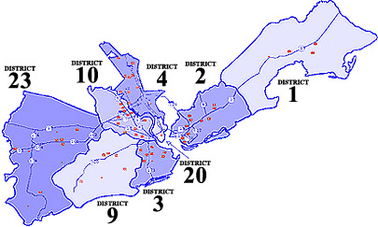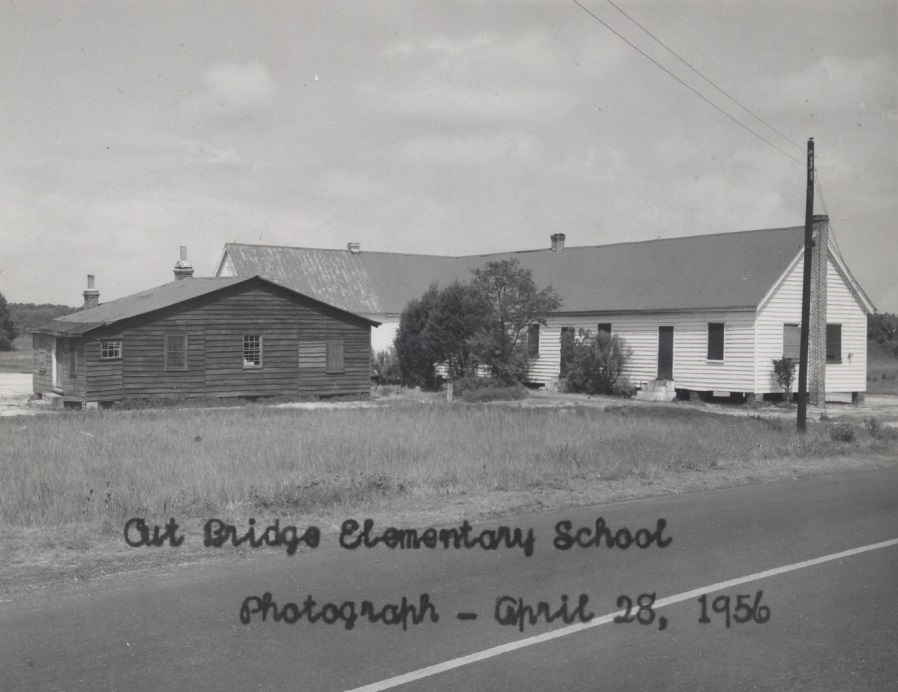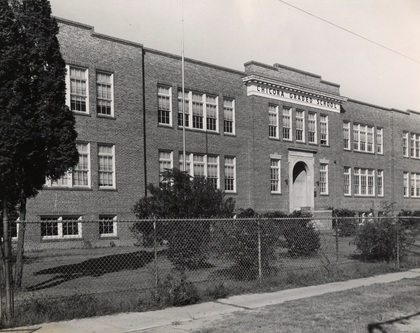Equalization in Charleston (1951-1962)
|
School districts across the state scrambled to take advantage of the Governor Byrnes' program and money for school construction. One of the requirements of the State Educational Finance Commission (the state agency created to oversee the equalization program) was to consolidate school districts and smaller schools. Charleston County became one county-wide school district, with internal divisions that covered smaller areas. District 20 covered the Charleston peninsula. |
In an attempt to increase support for the sales tax and school construction program, South Carolina allowed schools to build new white schools in addition to black schools. However, the school districts had to prove to the state that they were addressing the inequalities of black schools. To support the consolidation of smaller schools, South Carolina took over the school bus system to make sure students were able to attend the new schools. For the first time across the majority of the state, African American students were able to ride a publically-funded bus to school.
At the beginning of the equalization program, Charleston County’s 10,000 white students attended 29 schools with 379 teachers. The 9,400 black students attended 67 schools with only 234 teachers. The county had 7 white high schools and only 3 black high schools. Black students attended small schools, while white students had large, well-equipped schools with libraries, science labs, and athletic fields. African American students attended school in shifts, used old books from the white schools, and had to go home or bring lunches, while white students had hot lunches in their school cafeterias.
At the beginning of the equalization program, Charleston County’s 10,000 white students attended 29 schools with 379 teachers. The 9,400 black students attended 67 schools with only 234 teachers. The county had 7 white high schools and only 3 black high schools. Black students attended small schools, while white students had large, well-equipped schools with libraries, science labs, and athletic fields. African American students attended school in shifts, used old books from the white schools, and had to go home or bring lunches, while white students had hot lunches in their school cafeterias.
Despite neglecting black public schools, the Charleston school district wanted to take its equalization money and split it equally between white and black schools. Angry
parents, teachers, and the Charleston NAACP loudly protested, pointing out that the property values for schools equaled $435 for white students and only $206 for black students. After weeks of arguments and a formal petition to the school district, Charleston decided to fund more black school construction. The school district continued to refuse to construct a desperately-needed new black high school on the peninsula, opting instead to expand the existing campus of Burke Vocational High School.
Learn more about Charleston's Equalization Schools (1951-1962)
parents, teachers, and the Charleston NAACP loudly protested, pointing out that the property values for schools equaled $435 for white students and only $206 for black students. After weeks of arguments and a formal petition to the school district, Charleston decided to fund more black school construction. The school district continued to refuse to construct a desperately-needed new black high school on the peninsula, opting instead to expand the existing campus of Burke Vocational High School.
Learn more about Charleston's Equalization Schools (1951-1962)


